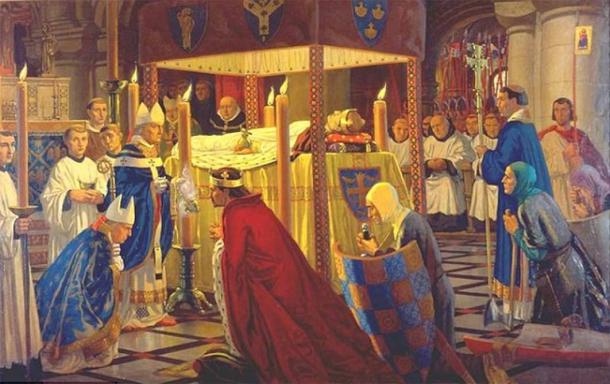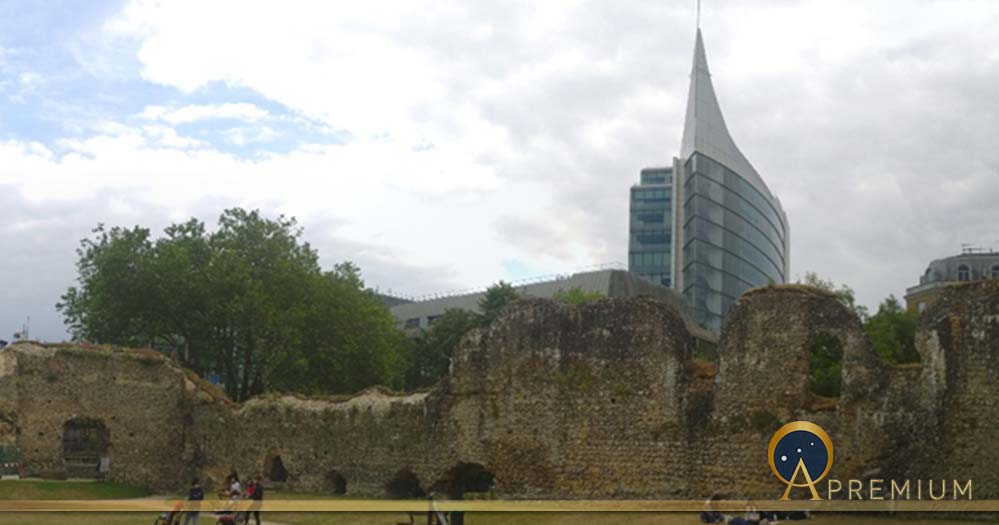Restoring The Ruins Of Reading Abbey, Resting Place Of Kings
Reading Abbey was once one of the largest monastic complexes in the British Isles. It was one of the pinnacles of religious life in England and the burial place of King Henry I. Located on a pilgrim route it was also home to a relic of St James and people flocked from all over Europe to visit it. The premises today could not be further away from this peak of medieval magnificence. Lying as it does near to the center of urban Reading, the site had long suffered from neglect and by 2011 the ruins were so unstable that they were closed to the public. Over the past decade however the site has undergone major conservation works funded by the Heritage Lottery Fund, Reading Borough Council and Historic England. At the same time the Hidden Abbey Project has been exploring the archaeology that lies beneath the surface at Reading and together they have pieced together this remarkable Abbey’s story.

Burial of Henry I at Reading Abbey in 1136, painted by Harry Morley (1916) (Public Domain)
Founded by Henry I
Reading Abbey was founded “for the salvation of my soul, and the souls of King William my father, and of King William my brother and Queen Maud my wife and all my ancestors and successors” by King Henry I of England. King Henry Beauclerc I was the son of William the Conqueror. Royal patronage was enough to ensure that from its beginning the Abbey was prestigious and in June 1121 monks were sent from the Cluny mother house in France, along with those from the Cluniac priory in Lewes, to found it.
The chronicler William of Malmesbury recorded that the “monastery (was built) between the rivers Kennet and Thames, in a place calculated for the reception of almost all who might have occasion to travel to the more populous cities of England”. Henry I’s foundation charter makes it clear that there had been a previous Abbey on the site. It is almost certain that this had been destroyed in 1005 when the Vikings were marauding the region and burning most buildings of authority. It is also probable that like other contemporary abbeys, such as Cholsey Abbey which was founded in 986 by King Ethelred as an act of penance for the murder of his brother Edward the Martyr, the earliest abbey at Reading was founded in atonement for a sin, as was common during the period.
Like this Preview and want to read on? You can! JOIN US THERE ( with easy, instant access ) and see what you’re missing!! All Premium articles are available in full, with immediate access.
For the price of a cup of coffee, you get this and all the other great benefits at Ancient Origins Premium. And - each time you support AO Premium, you support independent thought and writing.
Rebecca Batley has a Bachelor’s degree in archaeology (University of Wales) and a Master’s degree in Classics. In the field she has worked on sites dating to the Bronze Age, Iron Age, Romano-British, Roman, Medieval, Tudor, Georgian and modern periods. Employed by the Louvre Museum, she researched and excavated at sites in Egypt, Syria, and Israel. She works at the Military Intelligence Archive to help to prepare World War One records for cataloguing and digitalisation and she is a part time History tutor.
Top Image: The ruins of Reading Abbey and Forbury Park in 2020. (Marie / Adobe Stock)
By: Rebecca Batley


















